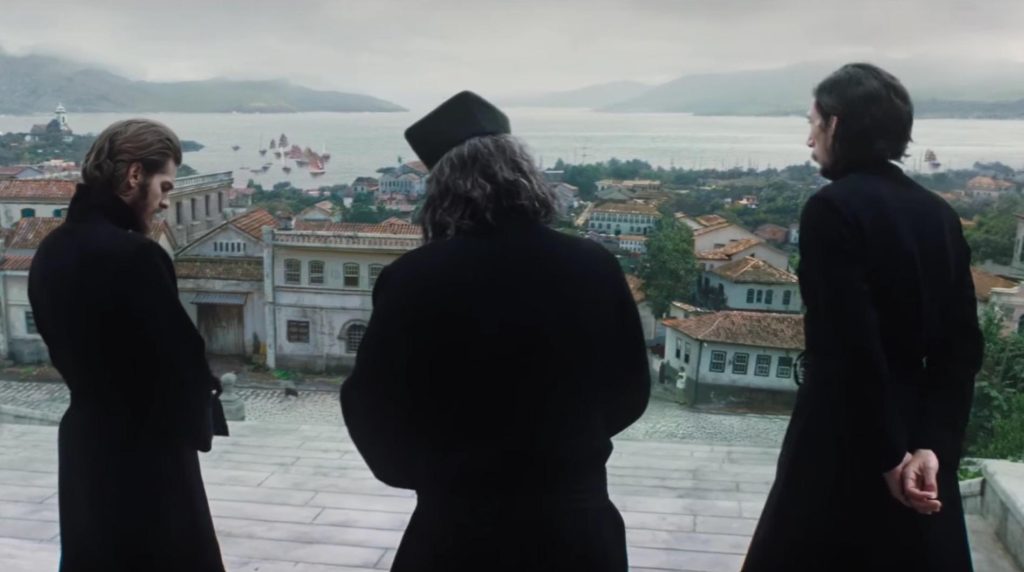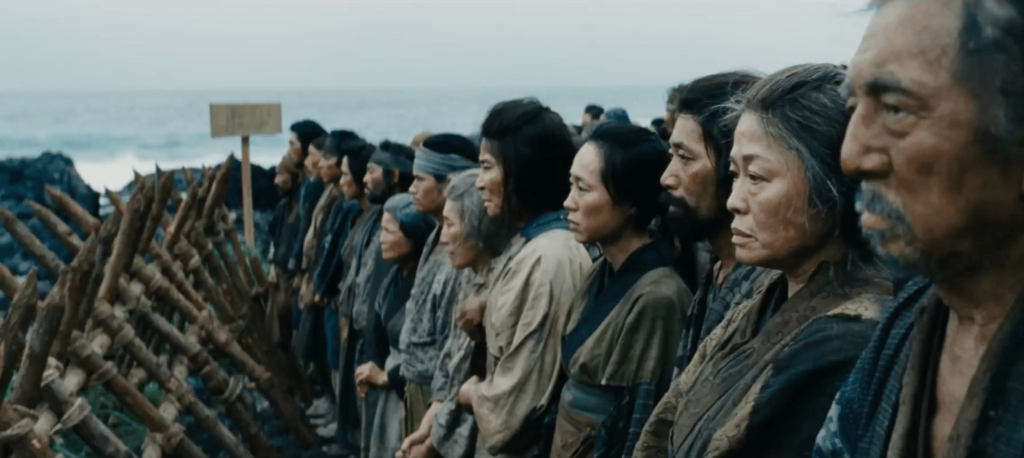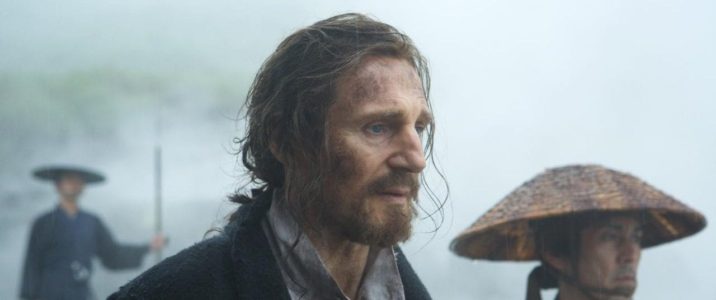Is there another living director who can be named the Patron Saint of American Cinema like Martin Scorsese can? His only contemporary who seems to rival him is Terrence Malick, and indeed his newest film Silence, with its bucolic visions of Japanese forests and extensive use of voiceover, certainly bears a passing resemblance to the latest output of Scorsese’s reclusive peer from the New Hollywood era. Nevertheless, like all of his movies, Scorsese retains a bevy of cinematic and literary allusions while crafting a defiantly personal work that only serves to cement his status as one of the iconoclastic artists in the last half century. Much as he did with The Last Temptation of Christ, Scorsese is confronting complex questions regarding ethics, belief, and for whom or what we commit ourselves to, even (or perhaps I should say especially) in the face of death.
None of these thematic concerns will surprise those familiar with either Scorsese’s previous work or the original novel by Shūasuku Endō (as well as Masahiro Shinoda’s 1971 adaptation). Both artists have a shared root in Roman Catholicism, and indeed Endō was intrigued with the religious dichotomy that existed in his country between those who accepted Buddhism as a religion that “allows for our weakness” and those who gravitated towards Christianity. The film faithfully recounts the heft of Endō’s tale of two 17th Century Jesuit priests who undertake a dangerous journey to Japan to find the mentor (Liam Neeson) with whom they have lost all correspondence. The whereabouts of the priest who, rumor has it, has recanted his faith, becomes secondary to the Japanese villagers who approach the priests in secret, relieved to have the presence of Christianity return to their borders. It is here where the young priest Rodrigues (Andrew Garfield) in particular faces a crisis in how best to guide these people so clearly devoid of hope. When one of the villagers confesses his fear in his faith faltering in the face of the oppressive government, Rodrigues commands him, “Tremble! There is no shame in trembling,” much to the shock and adamancy of his peer Garrupe (Adam Driver).

It is this complex approach to morality that gives the film much of its power, and this indeed extends to the characterizations given to the cast. Perhaps the most interesting arc of the film belongs to the exiled Japanese guide of the priests who left his country after committing apostasy in front of his family who was summarily executed in front of him, though to divulge in more details pertaining to Kichijiro would deprive the film some of its impact. Needless to say, he is neither noble nor irredeemable but ultimately painfully human. Even the ostensible antagonists, including the arrogant and perpetually disgruntled inquisitor (Issey Ogata), aren’t evil but rather seized by defensive nationalism. A crucial conversation held between two characters concerns a priest who visited Japan and “never bothered to learn” the language. This is also echoed by Garrupe’s initial attitude toward the country as one full of “fear and lice” and not only serves as a form of justification on the part of these government officials to do unspeakable things to expel all influence from the west, but perhaps more crucially to the film’s thematic current it reinforces the topic of cultural division that stems from a greater issue of communication among human beings. One of the bitter truths the priests understand all too late is that there is no such thing as a universal truth in relation to faith, not when human beings have such varying ideologies.

The greatest conflict in Silence is ultimately one concerning this quest for righteous piety in the wake of meaningless barbarity. There are no martyrs here, no glory in those who perish for their faith. In comparison to some of his past ventures, the violence here doesn’t rank with some of Scorsese’s goriest imagery, yet though it is infrequent and banal it remains no less distressing. Emotionally and spiritually, however, the film contends with material that is painful to watch as Rodrigues struggles to ascribe meaning to what happens around him and, ultimately, to his own faith and its significance in the face of God’s seeming impassivity. The Martin Scorsese who made this film is, in many respects, not too dissimilar from the one who made Taxi Driver and Raging Bull decades ago. But in his older age, the master shows a greater degree of discipline to rein in his stylistic flourishes, save for crucial moments that require them. He still worships at the altar of the Cinema, but has branched off from that adulation shared with his Catholicism to expose a nerve of human fallibility that has been prevalent centuries before the tale’s setting. In an age inundated with religious persecution and nationalist chest-beating, Silence is a cry for renewed personal responsibility. It matters for those who suffer in the name of their deity and those who suffer for their own convictions. The difference between the two can be easily mistaken to be imperceptible, and it is not only important for us, both secularists and faithful alike, to know the difference, but indeed truly necessary if we are to continue espousing any moral code that we can all abide by.
